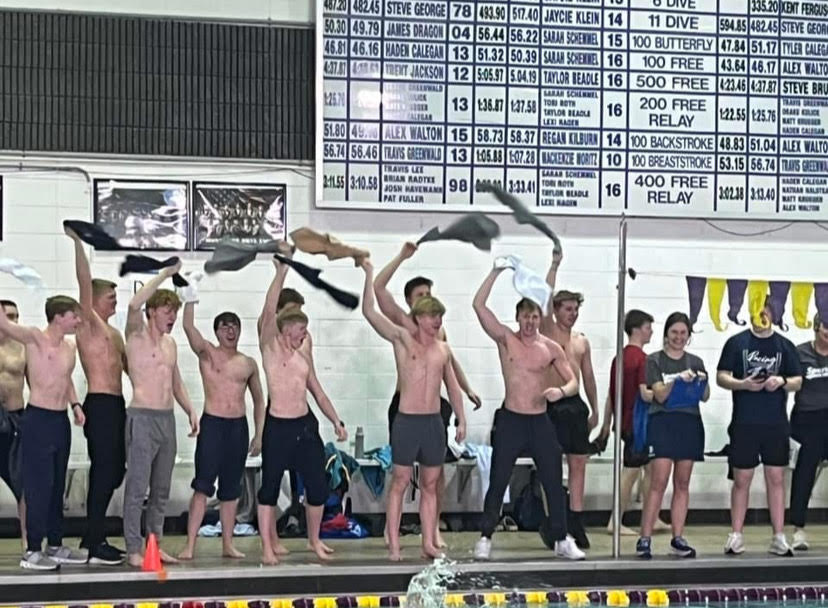Miss America used to be a pageant focused on physical beauty. Now, with the 100th anniversary approaching, it has turned into one of the world’s biggest advocates for female empowerment.
The first pageant on Sept. 7, 1921, named the “Inner City Beauty” contest, involved eight young women from “key cities” and crowned the winner after a day of mingling with judges and other contestants. Their scores were half-based on audience applause and half on judges’ decisions.
A year later, the “Inner-City Beauty” contest was renamed the “Showman’s Variety Jubilee,” however, the name ended up being the only change that year. The format of the 1921 pageant, mingling and scores based on applause, remained until 1924 when an interview portion was added to allow the judges to assess the personalities and intelligence of the contestants.
Green lighting the change helped empower the young women to express their personalities and prove they were more than simply a pretty face.
Continuing on the path of positive change, the Showman’s Variety Jubilee introduced a more diverse group of contestants in 1926. This led to the crowning of the first winner of Native American heritage that same year.
After a brief shut down due to the Great Depression, the Miss America pageant returned for good in 1935 with another new category: talent. Despite the category being optional, it allowed for the contestants to show off their skills and prove once again they had more to them than physical beauty.
It was three years later when another step towards empowerment was made. To remove the criticism of the young age range of the contestants, the pageant changed its rules so only 18-28 year-olds could compete. In addition to that, the talent portion was made mandatory for all contestants.
Senior Cassie Smith has watched the Miss America pageant for many years and believes the adaptations the organization has made to the pageant are very important. “Miss America influences many young girls,” she commented. “It is necessary the competition encourages the women to showcase their strengths and share their beliefs.”
One of the most empowering and groundbreaking additions to the Miss America pageant came in 1941, when pageant director Lenora S. Slaughter created the scholarship program in an attempt to encourage more women to pursue higher education.
This change in adding the scholarship program changed the reputation of the pageant. Previously seen as just a beauty contest, Miss America began appealing to women as something that supported them instead of objectifying them. Soon after, Miss America became the country’s leading organization for educational scholarships for women.
The scholarship program itself has grown tremendously since its founding. Today, the Miss America Organization (MAO) gives out more than $100,000 in scholarships to contestants, with $50,000 going to the winner, $25,000 going to the first runner-up and $3,000 going to even the last place finishers — ensuring all contestants are able to receive a scholarship.
PV alumni Caitlin Crome is serving her second year as Miss Iowa’s Outstanding Teen and raved about the MAO scholarship program and its benefits. “One of my favorite new changes is the separate scholarship interviews,” she said. “The winners of those interview rounds were then given an additional scholarship along with what they could possibly win during the actual pageant.”
Attempting to further their support of young women and cease focus on physical appearance, the MAO stopped listing contestants’ measurements in their program in the late 1980s. By doing so, it began to diminish the stigma that beauty only comes from being excessively thin creating a more body positive environment.
The MAO made another move of empowerment in 1990 when contestants were required to come up with a platform to speak on during tours. This allowed for the women to focus on organizations and messages that truly mattered to them in hopes to make a more positive impact on the country.
2019 was the first year the competition was branded as “Miss America 2.0” and brought yet another wave of evolution to the organization. This new competition did away with the swimsuit competition and replaced it with an interactive session between the candidates and judges so candidates could share their achievements, goals and how they would use their talent, ambition and passion to fulfill the role of Miss America.
Crome believes Miss America 2.0 is a step in the right direction for MAO. “I do believe physical fitness is an important value to have as a state holder, but that does not mean you need to be stick thin to win,” she expressed.
The revamped competition also involves candidates showing off their self-confidence in evening wear of their choice and discussing how they will advance their social impact initiatives.
Gretchen Carlson, Chair of the MAO Board of Trustees is excited to be encouraging women through Miss America 2.0. “We are no longer a pageant,” she announced. “Miss America will represent a new generation of female leaders focused on scholarship, social impact, talent and empowerment.”
As for her own experience with the MAO, Crome says she owes much of her new found confidence to the empowerment the organization provides. “In only two years, I have grown tremendously,” she reflected. “I used to be someone who was very quiet and had social anxiety going places alone. Working with [the MAO] to improve those weaknesses made me become the strong and independent person I am today.”
Since its start nearly a century ago, Miss America has grown from a small beauty pageant to one of the biggest encouragements for young women — showing its goal for inspiring, promoting and demonstrating female empowerment.
















Sandy Tegeler • Nov 12, 2020 at 10:49 am
The article definitely shows the growth of the MAO. It ‘s changes demonstrate more respect for the whole girl, rather than just physical features.